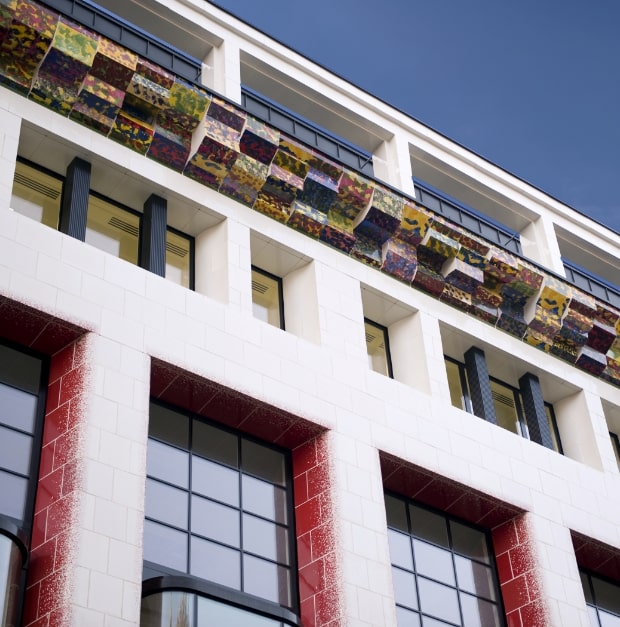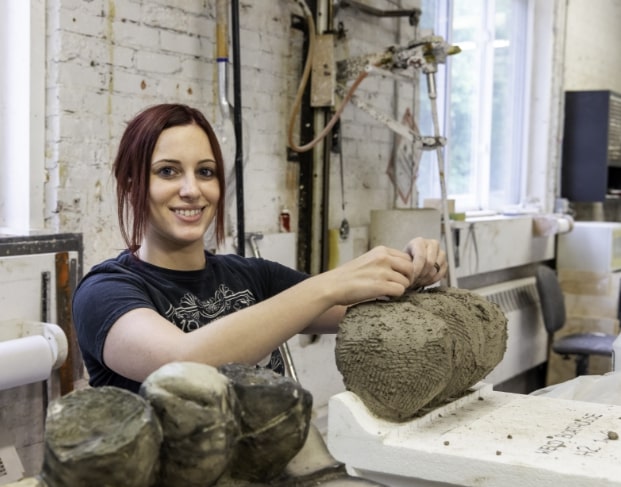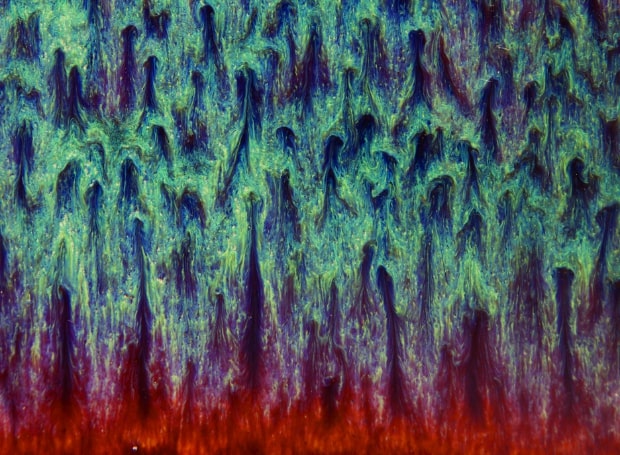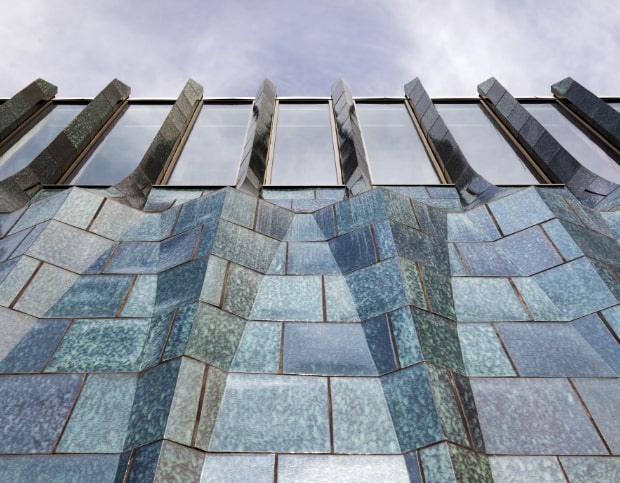FAIENCE + TERRACOTTA
We are the leading specialist in the use of terracotta and faience for modern architectural and construction purposes. We design, source, supply, develop and install this material working in collaboration with our trusted group of manufacturers.
WHAT WE DO
Our specialist team can provide early design and material advice, which is essential when looking to use this material – our early involvement will inevitably save time and money further down the line. Over decades of delivering faience projects we have fostered strong relationships with our trusted manufacturers and have a wealth of in house knowledge and skills.
Our services include:
ABOUT FAIENCE
Faience is the name given to glazed terracotta and terracotta is fired clay, which for construction purposes is normally either unglazed or has a transparent glaze. Due to its glaze, faience is a low maintenance, easy to clean material. It has very good thermal properties, is strong and durable and is fire resistant. Unlike some “modern” materials, faience has great longevity, as evidenced by the volume of historic buildings clad in the material, which makes it a highly sustainable choice. It can be produced in virtually any colour, finish and shape making it one of the most versatile and interesting building materials around; it offers the architect limitless freedom of expression. We specialise primarily in the sourcing and installing of hand produced faience.

THE PROCESS
The manufacture of faience is a long and complicated process, but worth it for the finished product.

MODEL + MOULD MAKING
At the start of the process is the model and mould making. Our trusted manufacturers generally create the models using CAD software and a CNC cutting machine with models produced in recyclable polystyrene or plaster. Some manufacturers use a 5 axis cutting machine. A reverse plaster mould is made from the model. The model and mould are sized larger than the final piece required to allow for natural clay shrinkage during firing. In the case of very intricate pieces an artist will create the model in clay.
Production + Casting
There are four main methods of production, hand pressed, slip cast, ram pressed and extruded.
HAND PRESSED
Clay is pressed by hand into a pre-made mould, which is normally plaster, and compressed. It sits in the mould for 1-2 days during which time the plaster dehydrates the clay allowing it to be released from the mould and hold its form. Good for highly detailed pieces, but time laborious.
SLIP CAST
A liquid clay is poured into plaster moulds to a tightly controlled thickness. The clay sets and partially dries before being removed from the mould. Normally it sits for 1-2 days in the mould depending on the size. Good for hollow elements and for retaining a relatively high degree of detail.
RAM PRESSED
The most efficient and quickest of the hand produced methods, but with some limitations. A clay slug is hydraulically pressed in a two part die, air forces water in the plaster die to the surface releasing the piece from the mould. Hand pressed, slip cast and ram pressed pieces are all finished by hand by artisans and hand glazed.
EXTRUDED
Entirely machine-led process of production. Efficient and quick, but with many limitations on size, design, shape and often glaze. Clay is forced through a steel die on the end of an extrusion machine at high pressure. This creates the profile, and the piece is cut 10% larger than required, to allow for shrinkage in the kiln.

Glazing
Definitely something of a dark art! Each manufacturer will have their own glaze library and development laboratory and can create bespoke glazes to exactly meet the client’s requirements. Glaze development is a slow process, so it is best to start early in the design. Glazes are applied in a number of different ways, from sprays, to brushes, rags and rollers. All hand produced faience is hand glazed by specialists. Extruded faience is generally sprayed by machine.
KILN FIRING
Faience produced by hand is fired in static kilns which can be easily configured internally to accommodate different sizes and shapes of pieces. The kilns fire at around 1200 degrees C and for a duration of approximately 30 hours. This time and temperature will fix the clay stability for its use in construction. Extruded faience is generally fired in a tunnel kiln. These have restricted opening heights of around 120mm which limits the height of the clay piece. Tunnel kilns also fire at 1200 degrees C and the pieces will remain in them for approximately 30 hours.


Design Possibilities
Working with faience affords virtually endless possibilities in shape and colour, and providing the planning officers are on board, gives the architect the opportunity to design truly stunning buildings. The only limitations with hand produced faience is in the size of the pieces, which ideally should be no larger than 800 x 800 mm and preferably nearer the 650 x 650 mm mark. Also, this is a hand produced, artisan product, so it will not be straight and precise. Allow for tolerances of + or – 1% with hand produced faience and joint sizes of around 10mm.
A Sustainable Material
One of the greenest there is! Clay is a 100% natural material, it is easily extracted and requires little in the way of intensive post-processing. In addition, terracotta and faience building materials are manufactured to last a lifetime and have superior longevity than other less robust materials. All our manufacturers exercise best practice with regard to sustainability through robust recycling, reuse and reduction of waste policies with systems such as repurposing the heat generated through kilns to other parts of the factories. Faience has excellent thermal qualities, it doesn’t burn, it is easy to clean, it is kind to the planet, it lasts a lifetime and if damaged, it is easy to repair. What is not to love.
